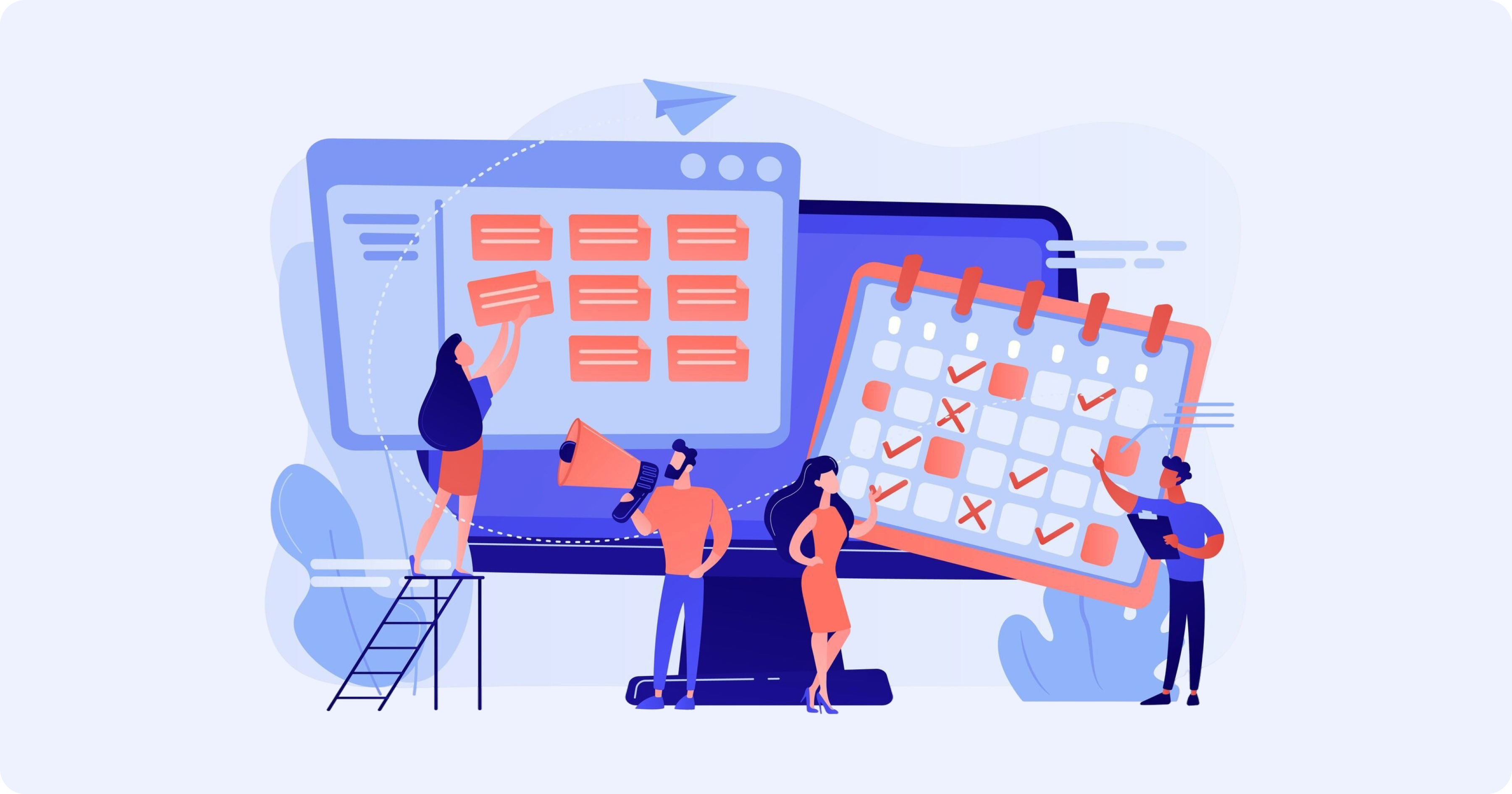Playbook
How to Plan Multi-Stakeholder Conferences Without the Chaos

When you’re planning a user conference, it can feel like you’re trying to be a mind reader, logistics coordinator, and brand ambassador all at once. Your VIPs expect special treatment, your speakers have very specific riders, your internal team members bring their own quirks, and the prospects you're trying to impress have their eyes wide open.
The challenge isn't just managing different people's needs (though that's hard enough). It's doing that while you’re creating an event that feels cohesive and professional. And when things go sideways — flights get canceled, speakers get sick, or your venue's WiFi decides to take a break — you need systems that keep you sane.
Susannah Banks, Chief of Staff at RevenueCat, has figured out how to run smooth user conferences that keep everyone (including her) happy. Her method? Stop trying to manually manage every detail, and start thinking systematically about how different attendees actually need to be treated.

Why One-Size-Fits-All Event Planning Doesn't Work
Event planning isn’t one-size-fits-all (even if your branded hats are!)
When you’re putting together a user conference, you’re juggling internal teams, VIP customers, speakers, and prospects — and they all need different levels of service.
User conferences can be trickier than internal team gatherings, adding complexity to the mix — especially if those outside participants have different needs and goals. You have to deal, too, with coordinating logistics for them (international attendees are even tougher), handling any planning crises that come up, and making sure the company ROI checks out. Otherwise, the conference might just be a bust.
What’s tough isn’t meeting everyone’s different needs. It’s meeting everyone’s needs AND having a cohesive event that delivers fresh, relevant content for all those different people.
Part of proving your company's investment in the event was worthwhile comes from getting the logistics right. When you do, attendees can focus on what matters: the content, making connections, and your brand.

A Step-by-Step Process for Creating Multi-Stakeholder Events
So how do you coordinate all your attendees’ needs and create distinct workstreams for every different type of guest? Banks breaks it down:
Step 1: Establish Clear Event Goals and Timeline
“I love to start with a date and work backwards,” Banks said. Whether an event has many stakeholders or is just for your team, her suggestion is to work backward from the event date in 6-week increments to schedule your major planning milestones.
18 weeks out: Develop the branding and messaging themes that are core to all your comms
12 weeks out: Finalize your workshop leaders, session scheduling, and room arrangements
6 weeks out: Finalize your guest list and secure the major logistics
Step 2: Build Venue and Location Selection Criteria
Now it’s time to take a look at your checklist. What are the non-negotiable requirements for your venue? Will this venue reflect your brand values? And can it accommodate any changes you might need? Banks’s pro tip is to add a 20% buffer to your current attendance numbers to account for later-stage growth.
For multi-stakeholder events, also think strategically about differentiation. At one conference, Banks realized they needed a hotel block for teammates as well as “a little bit nicer, more upscale hotel for our guests and VIPs." Different tiers = different accommodations.
Don’t forget about getting to the venue too: make sure it’s close enough to international airports, and that transportation is reliable and scalable. External stakeholders might not be super familiar with the area — taking these measures ahead of time can help.
Step 3: Segment Your Attendees and Define Service Levels
If you want your conference to work, you need a clear separation of service levels, logistics, and communication plans for your different attendees.
Some attendees book their rooms, and others get theirs booked for them. VIPs get the VIP treatment.
Banks and her team set up distinct tracks for different attendees from the very first welcome email. "We'll share details for the event, a courtesy hotel block, and then we'll have a track for speakers where RevenueCat's taking care of all of their logistics," she says.
Take a moment to define the attendee segments for the event based on their relationship with your company (e.g., regular attendees, speakers, VIPs, prospects, team members). Each segment should have specific services attached, like self-booking vs. company-managed travel.
But manual coordination won’t cut it. You need systematic approaches.
Banks uses Workgrounds to centralize all of RevenueCat’s travel booking, regardless of attendee type — it’s allowed her to be consistent across all attendees and still carve out provisions for each different level of service.
Step 4: Create Streamlined Travel Management Systems
When you’re dealing with a lot of people, you need a way to, well, not deal with each of their individual quirks all of the time.
Banks uses a centralized platform to simplify travel booking for all attendees — and to make it easy for guests to tweak their hotel plans without going through her. With 60 or 70 attendees, that saves her a lot of time.
Especially in a crisis.
"We used Workgrounds to book all of our flights when we did an internal event in Italy last year, and people had to go in, they had to update their flights. Some flights were canceled. Some flights were delayed,” Banks said. And she knew about those issues before anyone contacted her about it. Once they did, she was ahead of the game: she could say that everything was already covered. Workgrounds took care of the mess, and saved her 100s of panicked Slacks, too.
Communication streams that are proactive, not reactive, about travel? A sigh of relief for everyone.

What This Systematic Approach Actually Gets You
The Automation Advantage:
When she doesn’t have to fuss with flight changes, hotel room swaps, and other details (which add up fast), she can focus on high-value tasks instead.
Systems that track and alert you about travel changes automatically keep you proactive, and keep everyone on time.
"I cannot begin to explain all the time-saving moments that I've experienced with Workgrounds,” Banks said.
Improved Crisis Management:
You truly never know what’s going to happen when an event’s underway. Even in those last six weeks pre-conference, Banks has seen all kinds of last-minute issues take center stage.
When they come up, you need to “stay calm under pressure, and always, always, always have an alternative,” Banks said. With automated systems taking over routine tasks, you can free up your mental bandwidth to tackle the unexpected — but inevitable — challenges.
Better Attendee Experience:
You want your attendees to feel taken care of. And when they’re not stressed about their travel or their hotel, they will. That means they get to focus on the conference itself and what happens there: content and networking more than logistics. When they have a better experience, they think more highly of your brand.

The real event-planner magic happens when you're not constantly putting out fires. When your travel booking runs itself and people can actually reach you about the important stuff (instead of "Can you change my hotel room?"), you can focus on making the event awesome and memorable.
Nobody remembers a conference because the hotel booking was smooth — but they definitely remember when it wasn't. When you take care of all the behind-the-scenes stuff, attendees can come away with confidence in your brand, deeper connections with other stakeholders, and actionable ideas to further your partnerships.
With just a little automation, conferences are worth the investment.
Schedule a demo to start saving an average of 31% on every hotel booking.












.svg)